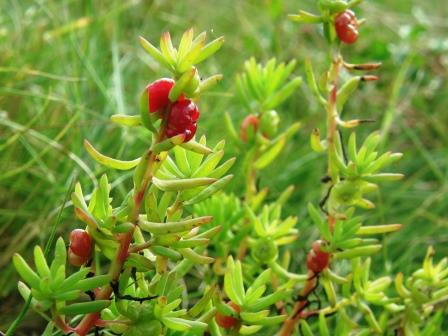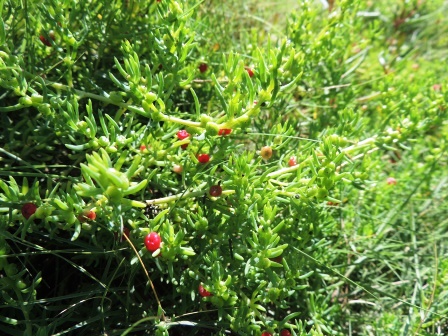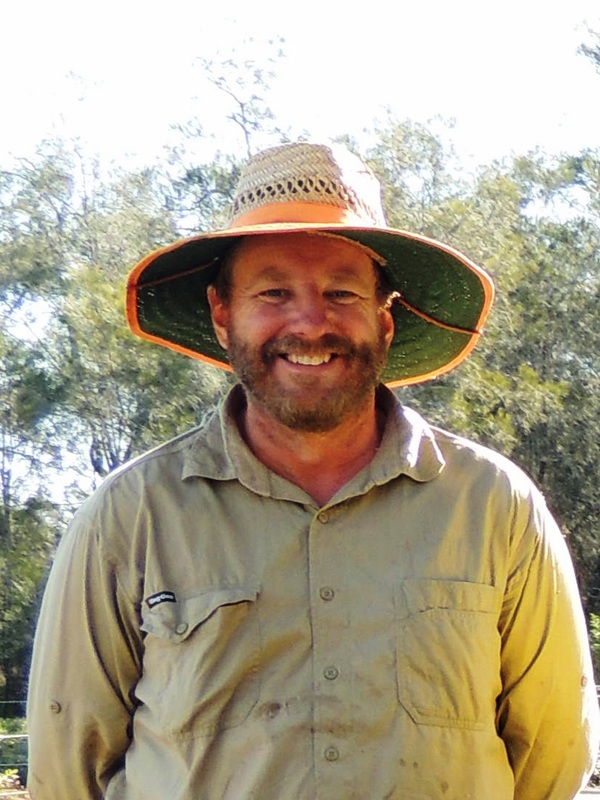Scientific name: Enchylaena tomentose
A semi-woody shrub, this plant can grow to a meter high. This plant is distributed along the coastal areas of the Moreton Bay region, but it also found throughout Australia. It is more common in the sub-tropical and temperate areas of the continent but can also be found in the tropics. It is a hardy plant and is often associated with saltmarsh habitat including the boundaries of saltmarsh associated with Melaleuca, Casuarina and even marine couch pastures. Locally, it can be found around the Hays Inlet wetlands including the Clontarf project site.
The leaves are semi-succulent which is an important adaptation for surviving in the harsh environment associated with saltmarsh. Ruby saltbush produces a small inconspicuous flower from September through to May although it produces a distinct flattened red berry. It is a bush tucker plant; the leaves can be eaten as a green vegetable and the berries are sweet to the taste. Birds are attracted to the berries and the bush provides habitat for insects and lizards. Saltbush is often found around the base of trees due to seed dispersal by birds.
A semi-woody shrub, this plant can grow to a meter high. This plant is distributed along the coastal areas of the Moreton Bay region, but it also found throughout Australia. It is more common in the sub-tropical and temperate areas of the continent but can also be found in the tropics. It is a hardy plant and is often associated with saltmarsh habitat including the boundaries of saltmarsh associated with Melaleuca, Casuarina and even marine couch pastures. Locally, it can be found around the Hays Inlet wetlands including the Clontarf project site.
The leaves are semi-succulent which is an important adaptation for surviving in the harsh environment associated with saltmarsh. Ruby saltbush produces a small inconspicuous flower from September through to May although it produces a distinct flattened red berry. It is a bush tucker plant; the leaves can be eaten as a green vegetable and the berries are sweet to the taste. Birds are attracted to the berries and the bush provides habitat for insects and lizards. Saltbush is often found around the base of trees due to seed dispersal by birds.




 RSS Feed
RSS Feed
